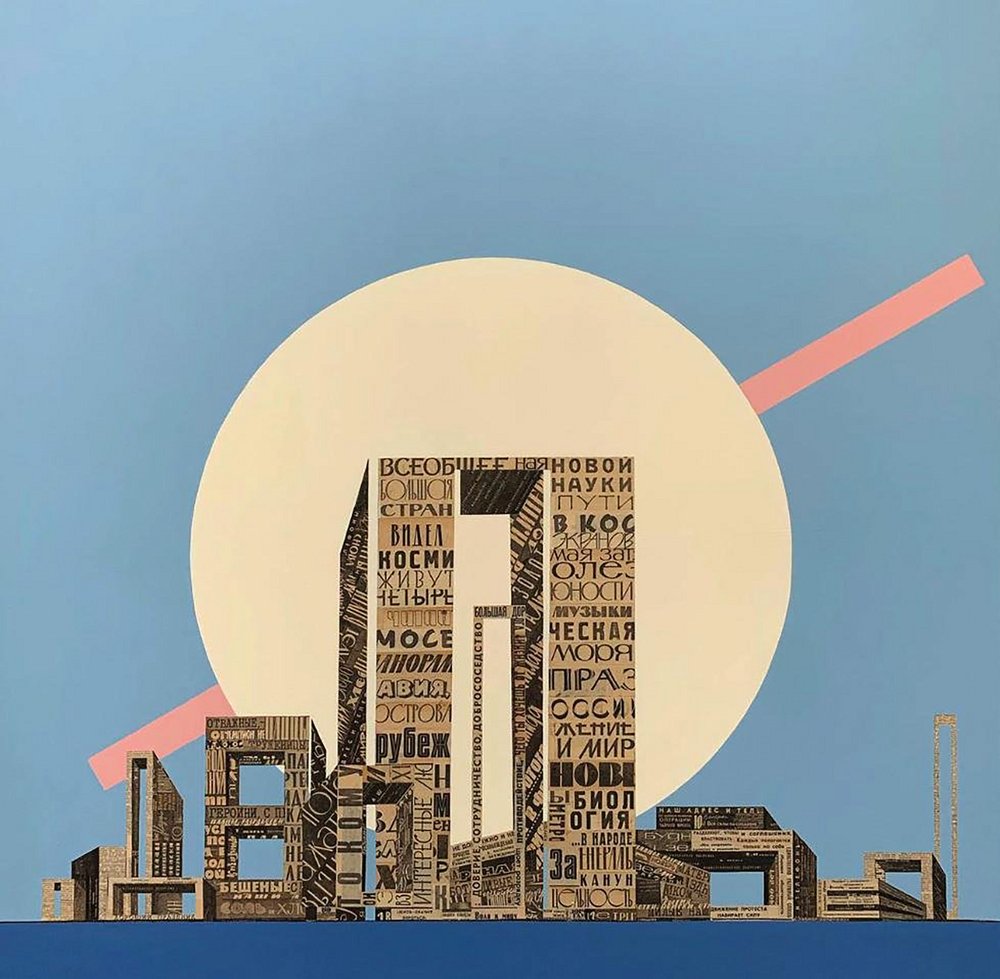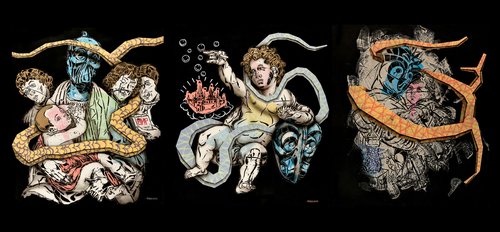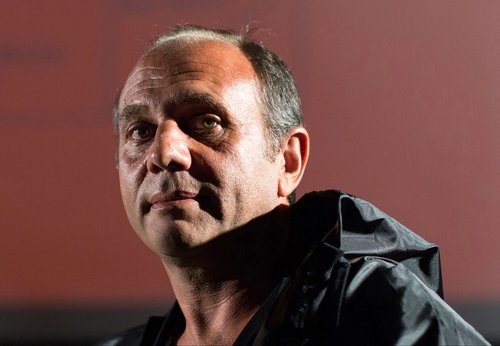Olya Kroytor Between Performance, Font and Abstraction

Olya Kroytor. Situation #50, 2024. Courtesy of Syntax Gallery
Russian artist Olya Kroytor brings her multidisciplinary exhibition ‘Cui bono?’ to the Nadya Kotova Gallery in Antwerp, blending performance art with collage, painting, and installations that explore language, absurdity, and architectural utopias.
Until 23rd of May, the Nadya Kotova Gallery in Antwerp is hosting the exhibition ‘Cui bono?’ by Russian artist Olya Kroytor (b. 1986), a project which was made in co-operation with Syntax Gallery, which represents Kroytor on the international art scene.
Her career took off in the early 2010s, after both a classical art education and the school of the Institute for Contemporary Art Problems (IPSI) as well as the ‘Free Workshops’ at Moscow Modern Art Museum. She is known primarily for her radical performances bordering the limits of human capabilities. In one of her earliest works, ‘Cleansing’ (2011), the artist cleaned the floor of the gallery with her own hair for the duration of several hours. In the performance ‘Untitled’ (2013) Kroytor lay naked for eight hours in a hole dug in the ground, covered with glass, as if an anthropological exhibit or an artefact on display. The idea for the work came to her while visiting the Louvre and observing people’s reaction to the Mona Lisa, as if people were only interested in the image of the painting projected by the media. For the viewers, the image was associated not only with the artist but also with death and burial.
In ‘Point of Support’ (2013), Kroytor stood for several hours on a tall wooden pole, dressed in black, balancing like an ascetic stylite. The main idea of the performance, expressed through a spectacular visual and bodily metaphor, is the search for support in a rapidly changing reality that is falling away from under our feet, where the artist experiences mixed feelings of elevation, floating above it and at the same time the fear of falling from a height. For this work Kroytor received Russia’s most coveted art award, the Kandinsky Prize in the category of Young Artist of the Year.
Today the Moscow-born artist divides her time between Iceland and Austria and works in a wide range of media – from painting, photography, collage and ceramics to objects and installations. The Nadya Kotova gallery is located in the heart of Antwerp's museum quarter, between the Royal Museum of Fine Arts and the MHKA whose collection boasts works by many performance and conceptual artists, including Marcel Broodthaers (1924–1976) and Ilya (1933–2023) and Emilia (b. 1945) Kabakov. And this topographical coincidence seems to be no coincidence – in the paintings, collages, objects and installations presented in the exhibition, Olya Kroytor appeals not only to the history of art, but also to the letter and sound as the starting point of her work, the language and absurdity of text, the everyday, the subconscious and irony.
The very title in Latin ‘Cui bono?’, meaning ‘Who benefits?’, was once used to denote the motive for a crime, and creates a certain mystery and even a challenge, because Olya Kroytor's ‘material’ works, unlike her sensual and emotionally poignant performances, are speculative and abstract, with no direct reference to either subject or object. According to curator Gunnar B. Kvaran, her sources of inspiration include constructivism, American pop art, science fiction and the cinema of David Lynch.
At the centre of the exhibition is one of Kroytor’s ‘word sculptures’, both a wall object and installation. It is composed of wooden cubes with painted letters, reminiscent of children's educational kits, and folded into unreadable words and meaningless consonances, except for the key phrase, ‘Cui Bono?’, as if it were about an event unknown to us, encrypted in this rebus.
Her collages, such as ‘Situation #50’ (2024), look like utopian architectural projects, where buildings are made of bricks with fonts and letters cut from real Soviet newspapers. The large-format works are juxtaposed with small minimalist sheets (‘Untitled’, ‘Dissociative Identity Disorder’, both 2011) made in monochrome or red-and-black, which simultaneously recall the legacy of the Constructivists and the long-standing European practice of the Dadaists, Surrealists and Conceptualists, who are more recognizable and familiar to the European public.
Another bridge to local audiences in Antwerp is the installation ‘My Grandmother is Fine’ (2025), where headlines and fragments of disturbing news from Belgian newspapers seep through the wallpaper with local Delft motifs, spreading and destroying the integrity of this cosy domestic world.
In Kroytor’s new paintings motifs of space, levitation, meta-spaces and fantasy utopian worlds reappear. These works can be divided into ‘white’ and ‘black’. In the former, architectural elements and structures in the most unusual geometric configurations, reminiscent of the ‘cubes, triangles and squares’ of objectless art, grow, hover, rise up and dive down on light backgrounds. When you get closer, you can see that their colourful and variegated texture is a layering of clippings from American comic books, kind of jewel-like mini-collages. In the ‘black’ paintings, architectural objects and organic formations float against a deep dark background, resembling icebergs and evoking the stark beauty of Iceland's desolate landscapes.
Kroytor’s work as a performance artist is literally woven into the fabric of the exhibition. During the opening, she repeated one of her most famous works, ‘2344’ (2018). The artist appeared among the guests in a red knitted dress that slowly and imperceptibly unraveled as she moved through the space, covering the gallery floor with a colourful web and gradually releasing the artist’s body. The number in the title refers to the length of the thread from which the dress is made, and the idea is that the garment becomes a shell, a cocoon that can be removed, making its own way as well as crossing over the paths of other people. The traces of this metaphorical journey are part of the exhibition and testify to the artist's invisible presence.



















